| BEFORE II W.W. | II W.W.
|
AFTER II W.W. |
| UPDATED MAR 2024 | ME - CONTACT |
 |
|
MIKOYAN-GUREVICH MIG 15 FAGOTWOSTOK FLYER |
|
 |
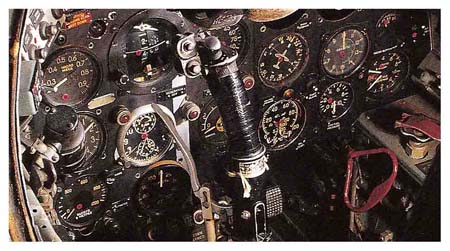 |
THE CLOCKDuring World War II, the Soviets were supplied with watches by the US, even receiving Swiss-made watches.After the war, the first watchmaking factory in Moscow, Wostok, was responsible for supplying watches.As can be seen in the photos, the movement of this "Flyer" is an exact copy of the Swiss Jaeger LeCoultre Chronoflite, the metal used is clearly of inferior quality.It has a large slot on the back of the case through which an electric resistor was inserted inside the watch to act as a heater, ensuring the operation of the watch and preventing the oil from freezing. |
|
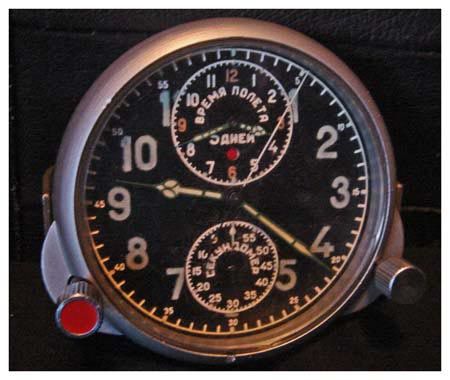 |
|
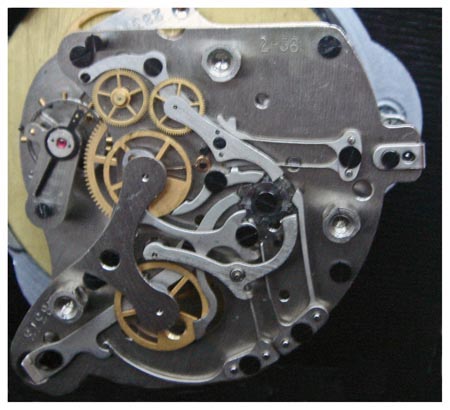 |
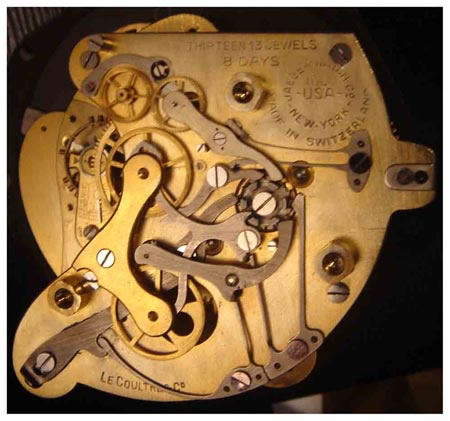 |
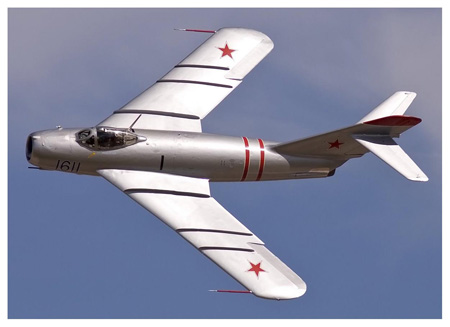 |
THE AIRPLANEThe MiG-15 emerged from captured German technology acquired during World War II. Its engine was a near-exact copy of the British "Rolls-Royce Nene" engine, which the British naively provided four models of to the Soviets.This legendary aircraft will forever be associated with the Korean War. At the war's outset, American fighters held a significant advantage over their Soviet counterparts. This dominance was completely overturned by the introduction of the MiG-15, which caught the West by surprise. Upon its arrival, it shocked everyone with a speed exceeding 100 km/h more than any other fighter.The MiG-15 inflicted such heavy losses on American forces that it grounded the strategic B-29 bombers. Both air forces exaggerated their losses compared to the actual number. However, they did agree that the MiG had wrested aerial superiority from the US Air Force over Korea.The arrival of the F-86 Sabre marked the beginning of one of the most evenly matched aerial combat periods. The MiG boasted faster acceleration, a superior climb rate, heavier armament, and better turning capabilities above 30,000 feet. According to reports, the Sabre held the advantage in maneuverability below 30,000 feet. This meant that if a MiG-15 forced a fight above 30,000 feet or into a vertical climb, it would likely emerge victorious. A MiG could easily escape a pursuing Sabre, as its ceiling reached 50,000 feet, while the F-86 was limited to 40,000 feet. However, below 30,000 feet, the Sabre dominated the MiG in most aspects and emerged victorious in most encounters, especially if the Soviet pilot made the mistake of engaging in a flat fight below this altitude.Ultimately, the biggest difference between the two fighters lay in pilot training and overall approach. The American pilots generally had superior training and a more aggressive attitude, which contributed significantly to their success against the MiG-15.THE COCKPITThe instruments and controls were easily within reach. The control stick was longer than the Sabre's due to the lack of hydraulic assistance for the flight control surfaces. |
 |
|
 |
|
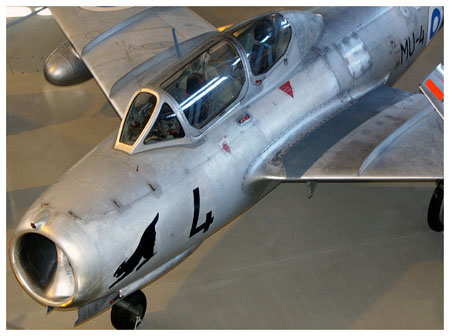 |
|
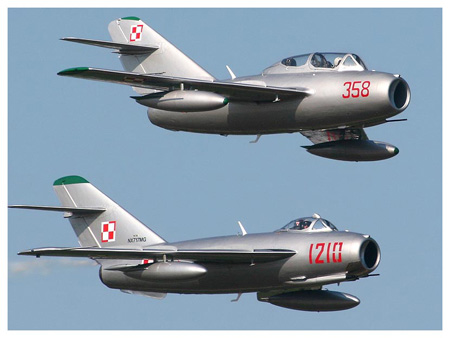 |
|
However, many MiGs could remain operational even after being hit several times, while Sabres would immediately lose control if their hydraulics were damaged. The cockpit's biggest issue was its inadequate pressurization system. At 50,000 feet, the cockpit pressure was only half of what it was at ground level. Additionally, the temperature dropped below freezing (32°F) at 36,000 feet and could easily reach 100°F at lower altitudes. The canopy consisted of a double layer of glass, making it less transparent than the one used in the Sabre. Furthermore, fogging on the glass significantly impeded visibility.Initially, the pilot could fire the 23mm and 37mm cannons independently. However, the weapon system was later redesigned to fire all three cannons simultaneously with a single trigger pull. The weight of this concentrated armament in the nose affected the aircraft's balance, making it difficult to recover from a diving maneuver due to the heavy nose. |
|
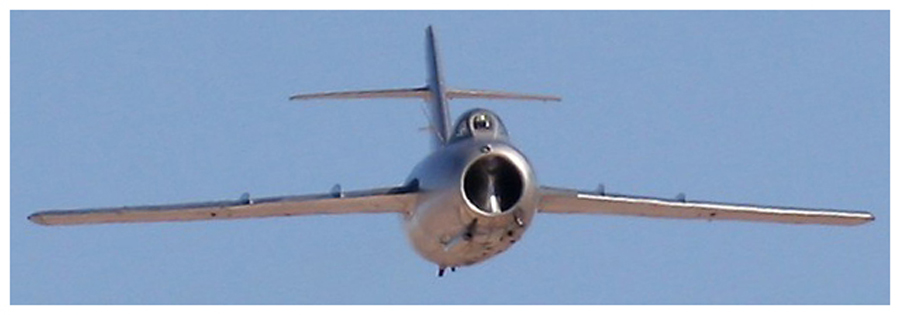 |
|
OPERACION MOOLAH - HOW TO GET A MIG-15 |
|
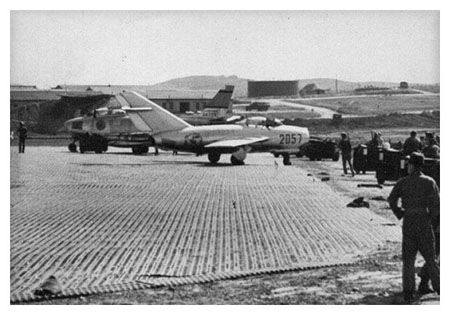 |
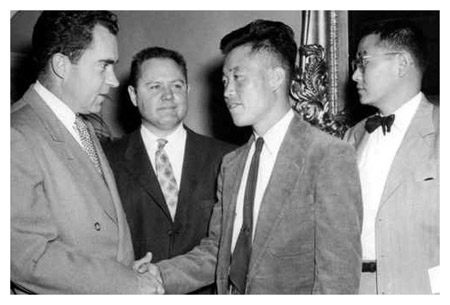 |
When the Mig 15 appeared his superiority was so large compared to all aircraft of the era, that the U.S. developed a plot trying to get a Mig 15 with his pilot, this plan was called Moolah.The night of 26 April 1953, 2 B-29 launched a million sheets of paper along the Yalu River, and 10 and 18 May, the Air Force launched a half million leaflets over enemy airports, pamphlets were written in Russian, Chinese and Korean, while 14 radio stations in as many languages relayed the same message.In the pamphlet the American Command offered to the brave pilot wishing to fly to freedom by abandoning the corrupt communist regime, a new, better and honorable life in the free world. It provided shelter, protection, health insurance, job, guarantee of anonymity if desired and a 50,000 USD reward to any pilot to take his MIG in good condition and fly to South Korea, plus a bonus of 50,000 USD who were the first.Then in the pamphlet came the instructions: to fly to the island Paengyong-do and from there to Kimpo Air Base at a height of 6.000 m and land immediately, if due to the bad weather it was not possible to find Kimpo AB, then the pilot must overfly to Seoul area in circles with the gear down, A United States aircraft will then fly close abreast and lead the way to the landing field. Upon initial contact with UN Aircraft, or if at any time UN Aircraft attempts attack, escapee will immediately lower landing gear and rock wings violently. The pamphlet concluded that the free world would welcome him as an old friend and a hero.On 21 September 1953, 5 months after the start of this operation, which was already forgotten by failure, a MIG 15 in South Korea appeared, nobody saw the MiG-15 approaching Kimpo airbase against the flight pattern until after it had touched down on the runway. The defecting pilot “wagged” his wings and fired four colored flares, red, yellow, green and white, to indicate that he was friendly, in distress, and intended to land. The air base was ringed with anti-aircraft guns and he wanted to be sure that there was no mistake or thought that he was attacking the field. The Kimpo airbase radar was out for overhaul on that day. The MiG pilot spotted a half dozen F-86s on practice flights in the Kimpo's southeastern sky at slow speed but the American pilots failed to notice the MiG coming down for landing. An F-86 was landing at the same time at the other end of the runway and the two fighters passed at high speed barely avoiding a head-on collision, to the surprise of the entire base the plane rolled to a line of Sabers and the North Korean Lieutenant No Kum-Sok parked, stopped the engine and got out, while the American pilots watched in open-mouthed wonder.The Pilot Kum-Sok said he did not know about the offer, although reading a leaflet was cause of death, as well as to touch the base radio dial, but if he would read the pamphlet it would not change anything because he did not understand nor knew the value of the coin, what could you buy with a dollar?. He simply escaped from communism because he grew up in a Christian atmosphere, was educated at a mission school, he always maintained Western values, and despite having followed the Communist slogans in his youth, when he saw the savagery of communism and Russian troops, decided to defect.Since joining the Military Pilot School 17 years before he began planning his escape, he flew over 100 combat missions.When he deserted the MIG 15 was less valuable, the MIG 17 was yet flying, however the plane was rapidly introduced into a hangar and 23 hours later it was disassembled and flying in a C-124 to Okinawa.The American propaganda took the picture of Kum-Sok receiving the 100.000 USD reward check, but the check was a fake, it has no funds !!, the army had no endowment for the prize. It was after a year when finally kum-Sok received the money. it is believed that it was the CIA who paid.Kum-Sok which was renamed Ken Rowe was working 7 months for military intelligence providing more than 100.00 USD valuable information about Russian bases, combat, training, etc. Ken worked for Boeing, General Dynamics, General Motors, General Electric, Lockheed, Grumman and Westinghouse. He taught engineering at the University of North Dakota and most recently at Embry-Riddle Aeronautical University in Daytona Beach.Fulfilling international agreements, the U.S. was willing to return the plane to its rightful owner if it was claimed, as the Russians never admitted being behind the Koreans in this war they could not claim it. Chuck Yeager the first pilot to pass the sound barrier, performed on this plane several test flights, the plane is currently at the Museum of the USAF in Dalton Ohio. |
|
GO TO - CLOCKS FOR SALE |
GO TOP OF THE PAGE |
HOME |